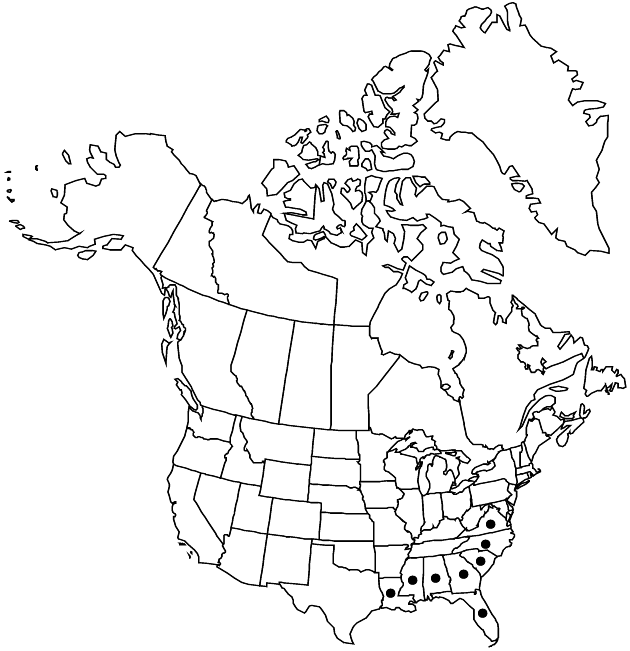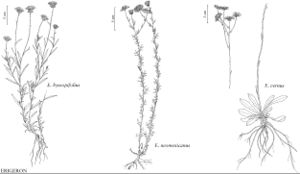Difference between revisions of "Erigeron vernus"
Fl. N. Amer. 2: 176. 1841.
imported>Volume Importer |
imported>Volume Importer |
||
| Line 59: | Line 59: | ||
|publication year=1841 | |publication year=1841 | ||
|special status=Illustrated;Endemic | |special status=Illustrated;Endemic | ||
| − | |source xml=https:// | + | |source xml=https://bitbucket.org/aafc-mbb/fna-data-curation/src/2e0870ddd59836b60bcf96646a41e87ea5a5943a/coarse_grained_fna_xml/V19-20-21/V20_563.xml |
|tribe=Asteraceae tribe Astereae | |tribe=Asteraceae tribe Astereae | ||
|genus=Erigeron | |genus=Erigeron | ||
Latest revision as of 20:04, 5 November 2020
Biennials or short-lived perennials, 15–50 cm; rhizomatous, fibrous-rooted, caudices relatively thick and short, or elongate rhizomes, or appearing simple, sometimes producing rosulate offsets. Stems erect, sparsely strigose to strigoso-hirsute or villous, eglandular. Leaves mostly basal (persistent); blades narrowly to broadly oblanceolate to spatulate, 20–100(–150) × 4–25 mm (usually ± fleshy-thickened), margins entire or denticulate to mucronulate, faces glabrate eglandular; cauline mostly bractlike. Heads (1–)4–20(–25) in corymbiform arrays (from branches near apices). Involucres 3–4 × 5–11 mm. Phyllaries in 2–3(–4) series, usually sparsely hirsute to strigose, sometimes glabrous, eglandular, sometimes viscid. Ray florets 25–40; corollas white, 4–8 mm, laminae not coiling or reflexing. Disc corollas 2.5–3.8 mm. Cypselae subterete, 1.2–1.6 mm, 4-nerved, faces sparsely strigose; pappi: outer of setae, inner of 16–25 bristles. 2n = 18.
Phenology: Flowering (Mar–)Apr–Aug(–Oct).
Habitat: Moist to wet sites in sand or sandy clay or sandy peat, pine or pine-palmetto flatwoods and savannas, interdunal swales, road banks, ditches
Elevation: 0–50 m
Distribution

Ala., Fla., Ga., La., Miss., N.C., S.C., Va.
Discussion
Selected References
None.
